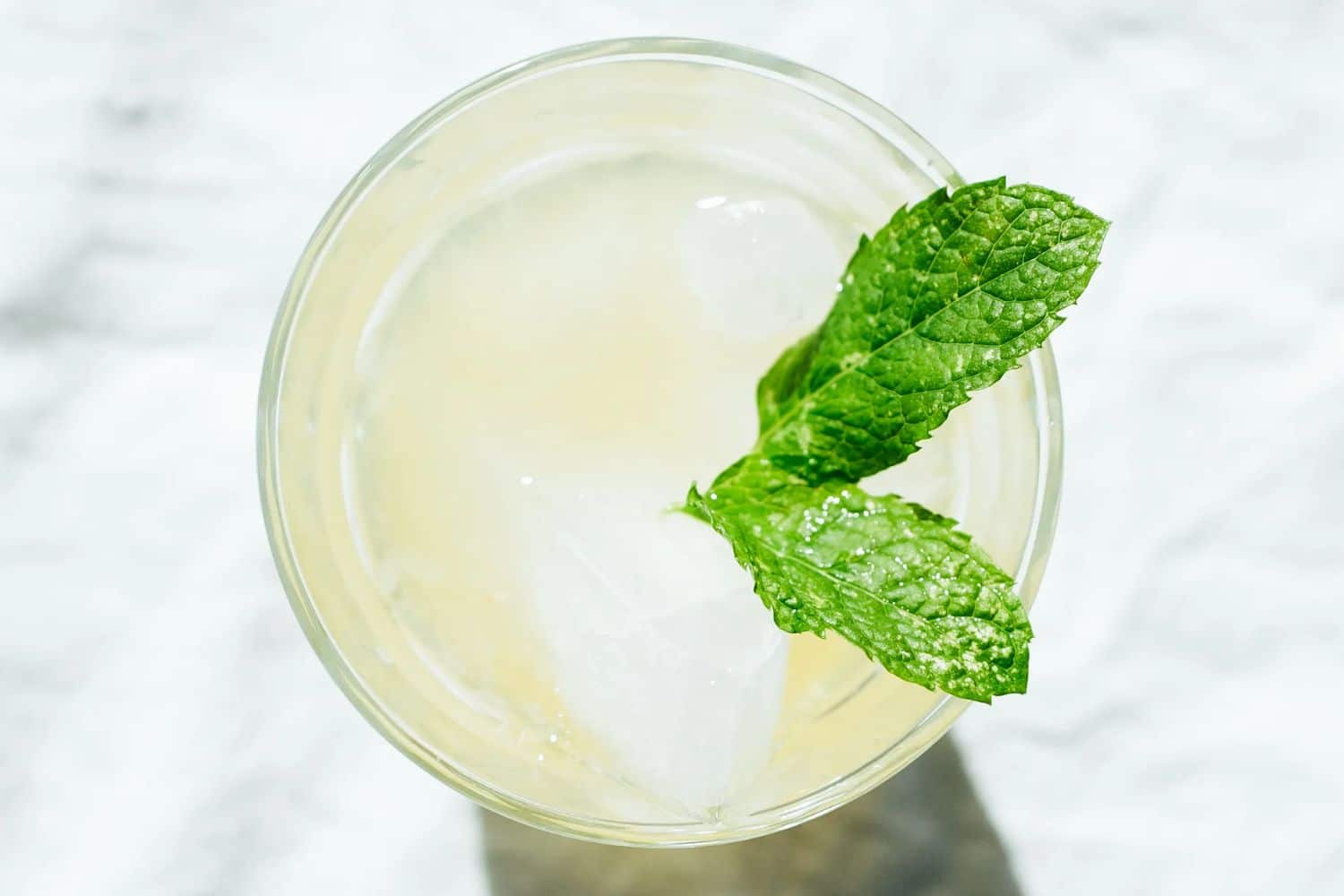12 Jun 7 Blue Butterfly Pea Tea Health Benefits: Unveiling the Science and Magic
Blue butterfly pea tea health benefits are making waves among tea enthusiasts worldwide. Known as Clitoria ternatea, this mesmerizing blue-hued tea is not only visually captivating but also offers a range of enriching health perks.
Originating from Southeast Asia, this tea has been traditionally used in various remedies and culinary delights. Let’s explore the origins of blue butterfly pea tea, the plant it comes from, and the unique taste that makes it so special.

What is Butterfly Pea Flower?
Blue butterfly pea tea is derived from the vibrant blue flowers of the Clitoria ternatea plant, a leguminous plant native to Thailand, Malaysia, and other parts of Southeast Asia. In some cultures, the Clitoria ternatea holds a symbolic meaning. In Thailand, it is associated with fertility and well-being, while in parts of India, it is used in religious ceremonies.
Despite its name, the butterfly pea flower is not related to the peas found in vegetable gardens. The name “pea” comes from its part in the Fabaceae family, which includes many legumes. However, the butterfly pea flower is primarily grown for its ornamental and culinary uses, particularly its vibrant blue petals, rather than for any edible peas. The perennial vine thrives in tropical and subtropical climates, growing best in well-drained soil with plenty of sunlight. It can be propagated from seeds, which should be soaked overnight before planting to enhance germination.
For centuries, the dried flowers of this plant have been used in traditional medicine and cuisine. The tea is made by steeping the dried petals in hot water, which releases a stunning blue colour.
Colour Changing Magic
Interestingly, the tea changes colour to purple when an acidic ingredient like lemon juice is added, making it a popular choice for colourful drinks and dishes. Blue butterfly pea tea changes colour due to the presence of anthocyanins, which react to changes in pH, turning from blue to purple or pink when acidic substances like lemon juice are added.

Butterfly Pea Tea Taste
When it comes to flavour, blue butterfly pea tea offers a mild, earthy taste with subtle woody undertones, reminiscent of green tea but less astringent. It can be enjoyed hot or cold, and its flavour profile pairs well with sweeteners like honey or additives such as mint and ginger.
Beyond its delightful taste, the tea’s vibrant colour and health benefits, including antioxidant properties and potential cognitive enhancements, make it a magical addition to any wellness routine.
Whether sipped on its own or used as a creative ingredient in culinary creations, blue butterfly pea tea is a delightful and healthy beverage worth exploring.
Nutrient Composition Of Butterfly Pea Tea
Rich in antioxidants such as flavonoids, anthocyanins, and catechins, this tea helps protect cells from oxidative stress, reducing the risk of chronic diseases and supporting overall immune function.
Here’s a list of unique nutrients found in blue butterfly pea tea and their benefits:
Flavonoids: Another group of antioxidants present in blue butterfly pea tea, flavonoids help protect the body from oxidative stress, which can contribute to chronic diseases such as heart disease and cancer.
Anthocyanins: These powerful antioxidants give the tea its vibrant blue colour and offer various health benefits, including reducing inflammation, supporting cardiovascular health, and promoting cognitive function.
Catechins: These antioxidants are known for their anti-inflammatory and anticancer properties. They may also help improve blood flow and lower blood pressure, contributing to overall cardiovascular health.
Additionally, it contains vitamins and minerals including vitamin C, vitamin A, and iron, which are essential for skin health, immune support, and energy metabolism.
The tea’s nutritional profile also includes peptides and alkaloids, which may have anti-inflammatory and antimicrobial properties, contributing to digestive health and overall vitality. Incorporating blue butterfly pea tea into your daily routine can provide a nourishing boost of essential nutrients to support optimal health.
Butterfly Pea Tea Health Benefits
Incorporating blue butterfly pea tea into your diet can provide a range of unique nutrients that support overall health and well-being.
Let’s explore Butterfly pea tea benefits in more detail.
Heart Benefits
Blue butterfly pea tea offers potential benefits for heart health, thanks to its rich antioxidant content. Antioxidants help combat oxidative stress and inflammation, both of which are linked to cardiovascular issues like heart disease and high blood pressure.
Regular consumption of butterfly pea tea may help maintain healthy cholesterol levels by reducing LDL (bad) cholesterol levels and increasing HDL (good) cholesterol levels, thereby promoting overall heart health.
Additionally, the tea’s anti-inflammatory properties may help protect the heart by reducing inflammation in the arteries and improving blood flow.

Glowing Skin
The Clitoria ternatea offers notable benefits for skin health. Rich in antioxidants, this tea helps combat free radicals, which can contribute to premature ageing and skin damage.
Regular consumption or topical application of blue butterfly pea extract may promote a radiant complexion, reduce the appearance of fine lines and wrinkles, and improve overall skin texture.
Additionally, its anti-inflammatory properties can soothe irritated skin and alleviate conditions such as acne or eczema. Incorporating blue butterfly pea tea into your skincare routine can contribute to healthier, more youthful-looking skin.


Eye Health
Butterfly pea tea offers potential benefits for eye health due to its rich antioxidant content, including flavonoids and Anthocyanins. These compounds help protect the eyes from oxidative stress and inflammation, which are linked to age-related macular degeneration, cataracts, and other vision problems.
Regular consumption of butterfly pea tea may help maintain healthy vision by preserving the integrity of the eye’s tissues and reducing the risk of degenerative conditions.
Additionally, the tea’s anti-inflammatory properties can alleviate eye strain and discomfort, promoting overall ocular wellness.

Weight Loss
Blue butterfly pea tea may aid in weight loss by promoting a sense of fullness, improving digestion, and providing antioxidants that can boost metabolism and reduce inflammation, although more research is needed to confirm these effects definitively.

Memory Enhancement
The flower enhances memory by boosting acetylcholine levels in the brain, a neurotransmitter crucial for learning and memory. The antioxidants in the tea help protect brain cells from damage caused by free radicals, potentially reducing the risk of cognitive decline.
Additionally, its anti-inflammatory properties support overall brain health, fostering a better environment for cognitive functions. Regular consumption may thus contribute to improved mental clarity and memory retention.

Reduces Blood Sugar Levels
Rich in antioxidants like anthocyanins, this vibrant blue tea may help improve insulin sensitivity and reduce blood sugar spikes, making it beneficial for those with diabetes or at risk of developing the condition.
Additionally, its anti-inflammatory properties contribute to overall metabolic health, supporting balanced glucose levels in the body. Regular consumption of butterfly pea tea could thus be a natural adjunct to a diabetes-friendly diet and lifestyle.

Stress Relief
Blue butterfly pea tea offers a calming respite from the stresses of modern life, thanks to its natural compounds that promote relaxation and alleviate anxiety.
Certain compounds in butterfly pea flower, such as flavonoids and peptides, may interact with neurotransmitter systems in the brain, potentially influencing mood and stress levels, although the specific mechanisms are not fully understood.
Butterfly pea flowers may contain trace amounts of L-theanine, an amino acid found in green tea known for its calming and stress-reducing effects. However, the amount of L-theanine in butterfly pea flowers is likely much lower than in green tea.
Some studies suggest butterfly pea flower might have adaptogenic properties. Adaptogens are herbs that may help the body adapt to stress. However, more research is needed to confirm this.
Overall, while there isn’t yet strong scientific evidence for butterfly pea tea’s direct effect on relaxation or stress relief, the potential benefits of its components and lack of reported side effects make it a potentially calming beverage to incorporate into a relaxing routine.
Butterfly Pea Tea Side Effects
Excessive consumption may lead to digestive discomfort, and moderation is crucial, especially for those with medical conditions or taking medications, as interactions are not fully understood.
While there is no universally agreed-upon limit for how much is too much, most herbal tea experts recommend limiting intake to around 2-3 cups per day. It’s essential to seek guidance from a healthcare professional before incorporating blue butterfly pea tea into your routine.
Is butterfly pea tea safe for pregnancy and breastfeeding?
While blue butterfly pea tea offers many health benefits, we do not advise to drink it whilst pregnant or breastfeeding.
Who should avoid butterfly pea tea?
We don’t recommend drinking butterfly pea tea if you have an allergy to pea flowers or legumes.
Butterfly Pea Tea Brewing Methods
Brewing blue butterfly pea tea is an enchanting experience with endless possibilities. Simply steep the dried flowers in hot water for a stunning blue infusion, or simmer for an even richer colour. For a refreshing twist, try cold brewing.
The magic happens when you add a splash of lemon juice—watch the tea transform into a vibrant purple! Play around with brewing times and temperatures to create your perfect cup. You can even turn it into a magical blue latte by adding frothed milk (and a spoon-full of honey).
Hot or cold, blue butterfly pea tea is a versatile, delightful, and healthful beverage that never fails to captivate.

How Do The Natives Brew It?
In Thailand, locals enjoy serving up butterfly pea tea in all sorts of fun and enchanting ways, showing off its colour and unique magic.
Traditionally, the tea is enjoyed both hot and cold, often sweetened with a touch of honey or sugar to balance its mild, earthy flavour. For a refreshing treat, it’s commonly served as a chilled beverage with ice, sometimes infused with lemongrass for an aromatic twist.
One popular preparation is “Nam Dok Anchan,” a cold butterfly pea tea drink typically garnished with a slice of lime or lemon. The citrus not only enhances the flavour but also creates a stunning transformation as the tea changes from blue to purple upon contact with the acidic juice.
This striking colour change makes it a favourite at cafes and street stalls, where it is often presented in clear glasses to highlight its vibrant hues.
This versatile ingredient is cherished for its beauty and health benefits, making it a beloved staple in Thai culture.
Click here for Nam Dok Anchan recipe by Peanut Palette.


Butterfly Pea Tea Baking Recipes
Baking with blue butterfly pea tea brings a magical touch to your culinary creations. This vibrant blue tea, made from the petals of the Clitoria ternatea flower, not only infuses your baked goods with a stunning natural colour but also adds delicate earthy and floral notes.
If you want to try transforming your cakes into visually stunning masterpieces, check out our Blue Vegan Cheesecake or our Blue Glazed Donut recipes!
What’s The Bottom Line?
Overall, butterfly pea tea, with its striking colour and mild, earthy flavour, is a unique beverage that offers a variety of health benefits.
Its rich antioxidant content supports metabolic health, heart health, and skin wellness, while its calming properties make it an excellent choice for stress relief.
There are many scientific studies to show the relationship between drinking butterfly pea tea and improved heart health . Another study from the National Libary of Medicene also discusses how the Clitoria ternatea can also lower blood pressure
Additionally, the tea’s beneficial compounds are increasingly being utilised in cosmetics, where its antioxidant and anti-inflammatory properties help promote healthy, radiant skin.
Whether enjoyed for its visual appeal or its health-enhancing properties, blue butterfly pea tea is a versatile and beneficial addition to any diet and beauty routine.



Sipping tea while brainstorming creative masterpieces!
Media, Communications, and Culture student with a passion for bringing ideas to life through design and media. Movie guru and gym enthusiast keeping it active and healthy in spare time!
- Isabella Osman
- Isabella Osman











Suraj
Posted at 11:59h, 20 SeptemberThis is such a thorough and well-explained article! I really enjoyed learning about butterfly pea tea—from its unique color-changing properties to its potential health benefits like heart support, skin care, and stress relief. The detailed brewing tips and precautions were especially helpful. Definitely makes me want to try incorporating it into my daily routine